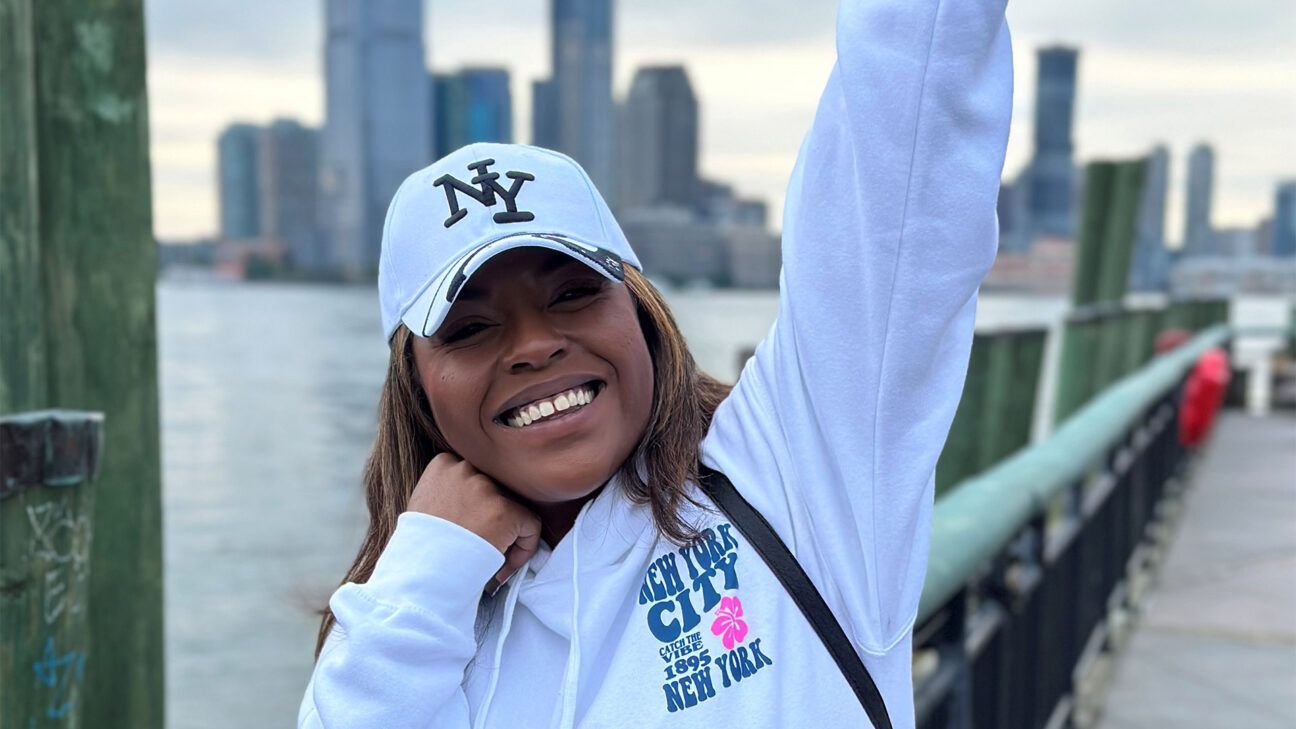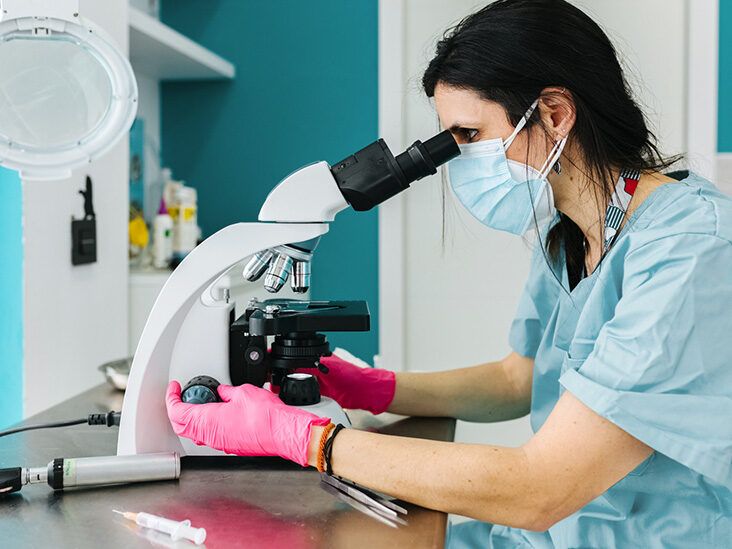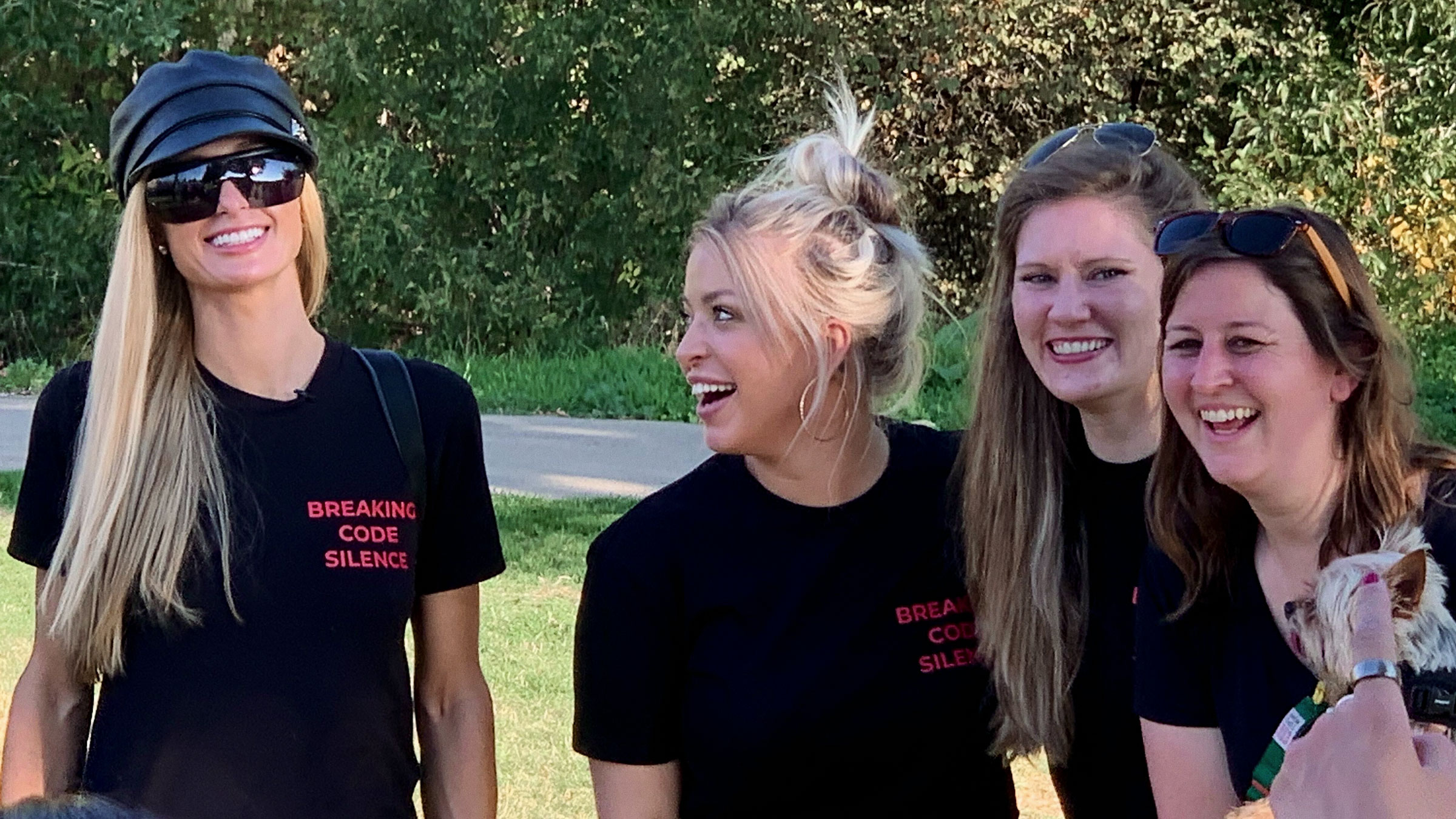 After years of living with painful symptoms, Cydney Carter (pictured above) was diagnosed with hidradenitis suppurativa (HS), a rare skin condition. Image Provided by Cydney Carter
After years of living with painful symptoms, Cydney Carter (pictured above) was diagnosed with hidradenitis suppurativa (HS), a rare skin condition. Image Provided by Cydney CarterCydney Carter says she was 12 years old when she first noticed what she thought were blackheads, transitioning into what she described as “boil abscesses” on her inner thighs.
At first, she assumed she wasn’t washing properly in the shower or using the right kind of soap. But soon, Carter says the “boils” on her skin became painful.
“It just got so bad that I couldn’t walk,” Carter told Healthline.
She told her mother, who took her to the emergency room, but the physician there had no answers and could not diagnose the issue.
“It was just a lot of unknown back then, and you just don’t know what you don’t know. So that was kind of the beginning of me not having the best relationship with myself,” she recalled.
Throughout her teen years, Carter was in and out of emergency rooms as more painful lumps appeared. Doctors would drain the fluid, but none of them were able to give her a diagnosis, and the pain got so bad she sometimes needed to stay home from school.
Finally, when Carter turned 17, she scheduled an appointment with a new dermatologist who told her, “I think what you have is hidradenitis suppurativa. It’s also called HS.”
She says hearing those words was life changing for her. She finally had a name (and soon a diagnosis) for the chronic condition she’d been living with for years.
Today, the 27-year-old is a visible advocate for others living with HS. She has gained more than 200,000 followers on TikTok and Instagram, where she shares her journey managing her chronic condition.
Recently, she partnered with Make HStory, a national unbranded educational campaign from UCB that aims to raise HS awareness.
“If you told me at 12 years old that one day I would be sharing my story with everybody, I would literally probably laugh at you. To be in this space now is nothing short of an honor and a privilege that I don’t take for granted,” she said.
What is hidradenitis suppurativa (HS)?
HS affects about 3.3 million people in the United States, according to 2017 research, which disproportionately affects women and Black people, who are at two and three times higher risk, respectively.
The recurring painful skin growths caused by HS occur in areas with sweat glands. They usually appear as firm lumps just under the skin’s surface or pus-filled abscesses that can drain out and cause a pungent odor. In some cases, the lumps can form sinus tracts between these pockets of pus on the skin’s surface.
Jenny Hsiao, MD, is a dermatologist and researcher at the University of Southern California and a member of the HS Foundation.
She joined the Make HStory campaign to shed more light on this condition, which can often bring stigma and feelings of shame. Hsiao told Healthline that when left uncontrolled, HS can lead to “anxiety over flares and start to impact the quality of life and the ability to function.”
For Haley B. Naik, MD MHSc, associate professor and vice chair for the Health Equity Department of Dermatology at UCSF Health, HS can really be a “painful, isolating, and limiting condition” for people, especially given that it generally starts to present itself during a person’s adolescent years.
“HS affects all parts of their lives. It physically impacts people’s ability to be active. In some cases, it makes it difficult for people to walk and sit,” Naik, who is unaffiliated with the campaign, told Healthline. “In adults, this is a condition that limits people’s ability to get to work or sit or stand.”
Naik added that, besides impacting job opportunities and income attainment, it can also limit social interactions, friendships, and intimate relationships. All of which can contribute to depression and anxiety.
What types of treatments are available for HS?
While there is currently no cure for HS, treatments are available.
Naik said two FDA-approved medications are currently on the market that can help treat severe-to-moderate HS.
Both of the treatments and immunotherapy medications, or “biologic agents”, and she said they have been a “real boon for treating HS.”
She added that other drugs are in the development pipeline for this condition, including JAK inhibitors that reduce inflammation and BTK inhibitors, both of which “show promise in HS treatment.”
“So, for the next three to five years, and even beyond, we are really excited about the opportunities that exist for treating people with HS and help [come up with] solutions so that people can live their lives,” Naik added.
Hidradenitis suppurativa (HS) is often misdiagnosed
Naik said that misdiagnoses for HS are “extremely common.”
She said it takes about seven to 10 years for people with this condition to get a correct diagnosis from the onset of their symptoms.
Naik also said there is “limited awareness” of HS within the general public and the medical community, with most medical students getting a limited overall education in dermatology.
“So, if you haven’t seen it or been taught about it, you are unlikely to think about it when it walks in your door,” she said.
Hsiao said that over the years of misdiagnoses, many people are in and out of urgent care or emergency rooms, trying to find short-term solutions.
She said it’s important to note that HS is a chronic inflammatory skin condition and needs long-term management by a dermatologist in an outpatient setting.
“Hopefully, with more awareness about HS, people who get symptoms will know that they can see a dermatologist, and they know they can get appropriate treatment,” Hsiao said.
Recognizing a need for greater awareness and advocacy
Shortly after her diagnosis, Carter was surprised to find there was little research about HS, treatments were limited, and there was no known cure.
Frustrated at the lack of available HS information, Carter began sharing her skin journey on social media.
“The first time I posted a picture on Facebook, I deleted it 20 minutes later. Instant regret! But talking about it in video form really changed everything for me. I remember flaring on my lower abdomen, and one day, just the pain alone, I was like, ‘somebody’s gotta get it, somebody’s gotta understand what I’m going through,’ ” Carter recalled. “I remember going through that vulnerable moment in my bathroom and waking up the next day, and it went viral. I was like, ‘Woah, what is happening?'”
She was floored by the comments of support and people writing things like, “I can’t believe you have this. Your skin looks like my skin.” She said they confirmed for her that she needed to keep sharing her story.
“To the people who say, ‘You keep me going,’ I say, ‘No, you keep me going,’ ” she added.
Carter also said it was “eye-opening” for her to see the number of Black people living with HS. In addition to sharing her own story, she said she strives to share information that can help “Black people get all the correct care and treatment and recognition that they deserve with their doctors and providers.”
It’s still unknown exactly why women and some ethnic and racial groups are affected more than others. However, Hsiao said that knowing that there are disproportionately affected groups can better help healthcare providers properly diagnose and treat the condition. That knowledge can also help guide the direction of future research and awareness campaigns.
How HS awareness campaigns can help change lives
Carter said that through the Make HStory campaign, she feels she is “healing myself and other people in such a positive way,” and she hopes it inspires those who need treatment to seek it.
Hsiao echoed Carter’s hopes, saying the big takeaway from the awareness campaign is that early diagnosis and treatment can help significantly improve a person’s overall quality of life.
“If a reader sees this and says, ‘Wait a minute, I have had a couple boils in my armpits, and they happened in more than one occasion in a span of one year,’ then you should see a dermatologist,” Hsiao said.
Today, Carter says she is doing well. A mother of three with another baby on the way, She keeps posting on TikTok to her followers, sharing information about HS with a dose of positivity and empathy along the way.
“Any time I’m talking to [my followers] live and have them right there in my face, I say, ‘Please talk to somebody,'” she said. “We don’t deserve to carry the weight that HS can put onto your mental life, your physical life. You don’t deserve to carry that alone. I just give them the homework to talk to somebody about their HS. For some people, that might be a therapist; for some, it might be telling a stranger. [It’s] okay to take themselves out of that shame box and isolation. That is one of the first steps to really allowing yourself to heal and feel all the feels and share their story, just like I do.”

 2 weeks ago
11
2 weeks ago
11








 English (US)
English (US)